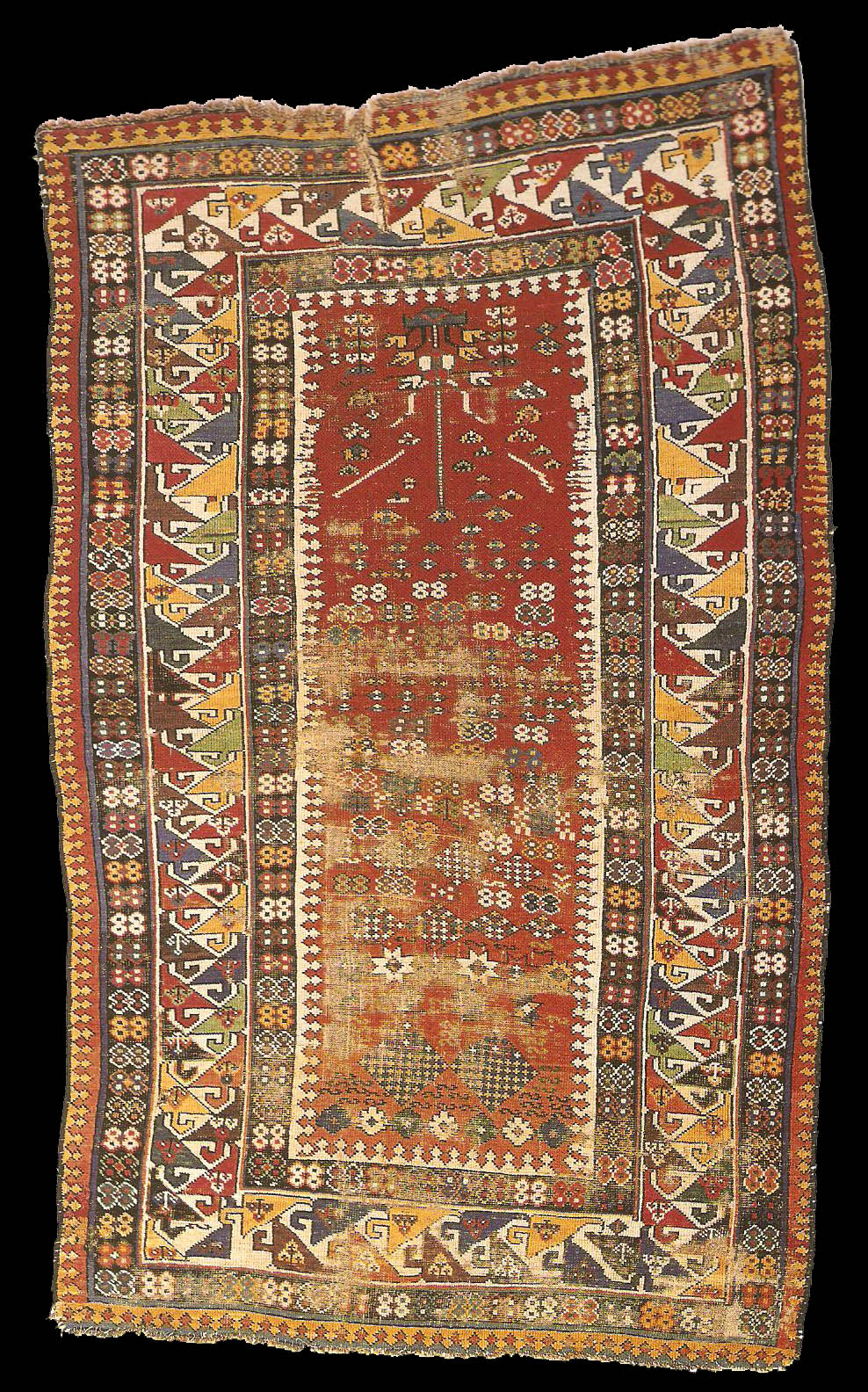|
2nd half 19th century 1.13X 1.83m (3'8"X6'o")
This carpet presents us with an intriguing conundrum. As pictured, it reads
as a conventional prayer rug. The oblique white lines suggest a rudimentary
prayer arch, while the little arrows pointing upwards to an apex recall
similar, enlarged motifs in the fields of some Anatolian rugs. The field
below the arch is filled with geometric renditions of floral forms, in the
familiar pattern of prayer rugs. If examined the other way up, however, the
'arch' becomes an abstract flowering vase. The 'eagle's beak' border can be
read in either direction. The owner. Jim Dixon. is convinced that the
weaver's primary intention was to make a prayer carpet; he points out that
all mihrabs are reflections of heaven and. as such, are sometimes rendered
like a mirror. Many early Anatolian prayer rugs feature upside-down vases,
lamps and ewers. (How this convention made its way from Anatolia to the
Caucasus is a subject for interesting speculation.)
A possible 'dual purpose' for this rug cannot be discounted, however.
Although the soft wool and dyes are of the highest quality, as is typical of
Moghan work, the execution is experimental, not following convention or a
cartoon. It is possibly a unique rug, or made far a client who wanted a
dual-purpose piece. It is likely that more that one weaver was involved in
making this rug: the reciprocal guard borders, particularly those
closest to the field, are imprecisely rendered while in other places the
pattern in handled with sureness and skill. No parallel pieces are known.
Technical Analysis
Warp: white and brown wool, mixed together, Z3S, 20 threads per inch (80 per
dm)
Weft: white wool, Z3S, 2 shoots, 10 knots per inch (40 per dm)
Pile: symmetrical knot, 100 knots per square inch (1600 per square dm)
Ends and sides are not original.
Dixon Collection
lit: Ralph Kaffel " Caucasian Prayer Rugs"
published Ralph Kaffel " Caucasian Prayer Rugs", plate no: 36
 |

